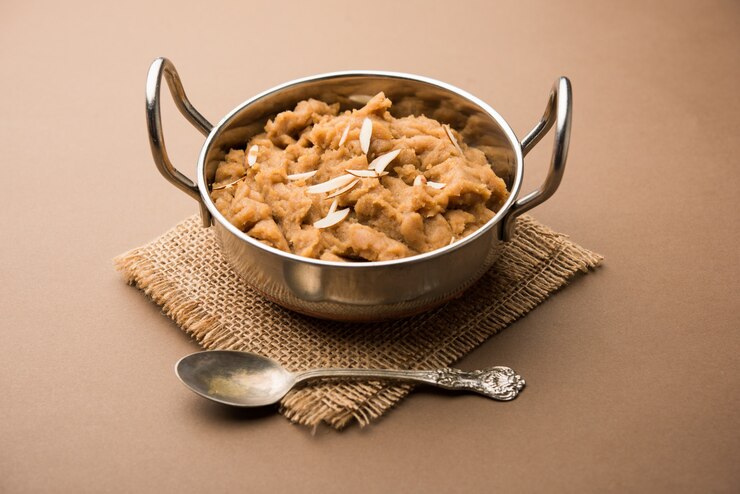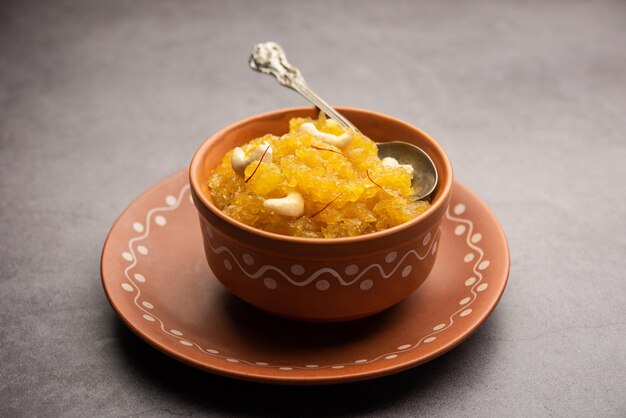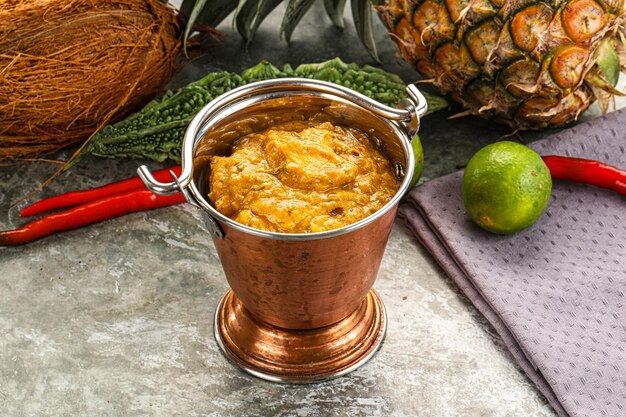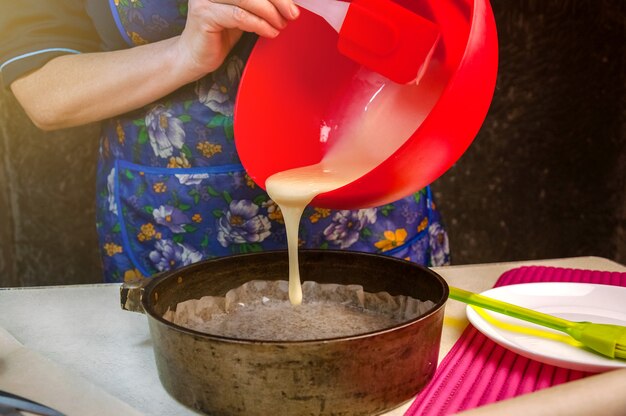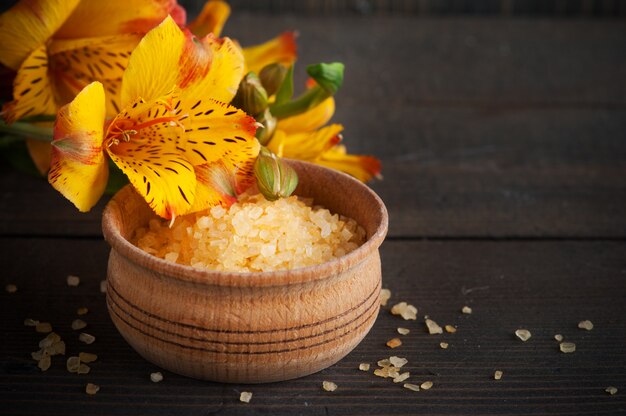Sakkarai Pongal is a beloved South Indian sweet dish that celebrates the harvest season. It is made primarily with rice, moong dal (lentils), and jaggery, creating a fragrant and rich flavor profile that has become a staple during the Pongal festival. If you’re looking for a simple and traditional recipe that brings out the essence of South Indian cuisine, this Sakkarai Pongal recipe is perfect. This recipe will guide you through the process, from the ingredients list to serving suggestions, ensuring that you can create this sweet treat with ease and confidence.
What is Sakkarai Pongal Recipe Easy?
Sakkarai Pongal is a traditional sweet dish from South India, commonly prepared during the Pongal festival. This festival marks the end of the harvest and is a time of thanksgiving. The dish itself is made by cooking rice and moong dal together, then sweetening the mixture with jaggery. The dish is further enhanced with the aroma of cardamom, cashews, and ghee.
The Pongal festival holds significant cultural importance, and Sakkarai Pongal is considered an offering of gratitude for the harvest. It’s often prepared in large quantities and offered to the gods as part of the festival rituals. It’s also a way of sharing blessings with family and friends.
For more about the importance of this festival, and other traditional recipes related to it, you can explore this resource on the cultural significance of Pongal.
History and Origin of Sakkarai Pongal
Sakkarai Pongal has its roots deeply embedded in South Indian culture. The word “Pongal” itself means “overflowing” or “boiling over,” symbolizing the abundance of the harvest. The dish is a celebration of this harvest, where rice is the primary crop. Historically, Pongal has been a festival of thanksgiving, and Sakkarai Pongal has always been the centerpiece of the festivities.
The use of jaggery, a traditional unrefined sugar made from sugarcane, gives this dish its unique sweetness and rich color. Jaggery has been a staple in Indian kitchens for centuries, and its addition to this dish ensures that it is not only flavorful but also nourishing.
Though it has been passed down through generations, the recipe for Sakkarai Pongal has remained relatively simple and unchanged, representing the simplicity of the South Indian way of life. Over time, different regions have added their own variations to the recipe, but the essential elements have remained the same.
You can learn more about the customs surrounding Pongal and explore additional traditional dishes in this Pongal Festival Book.
Essential Ingredients for Sakkarai Pongal
To make a traditional Sakkarai Pongal, the following ingredients are necessary. Here’s a breakdown of what you’ll need and their role in the dish:
- Rice – The base of the dish, typically short-grain rice like Sona Masoori or Ponni rice. It gives the dish its texture.
- Moong Dal (lentils) – Adds a mild nuttiness and a protein boost. It also helps thicken the dish slightly.
- Jaggery – The star ingredient that sweetens the dish. It’s also full of natural minerals.
- Cardamom – This aromatic spice is what gives Sakkarai Pongal its signature fragrance.
- Cashews – For added texture and richness, cashews are roasted in ghee and added for a crunchy contrast to the soft rice and dal.
- Ghee – Provides richness and a distinctive flavor. It also helps sauté the cashews and fry the spices.
- Water – To cook the rice and dal together, water is the base liquid.
- Coconut (optional) – Some variations of Sakkarai Pongal use freshly grated coconut for extra flavor and texture.
- Raisins (optional) – Some recipes include raisins for added sweetness and a chewy texture.
With these ingredients, you can create a dish that balances textures, flavors, and nutrients, making it the perfect sweet treat for any occasion.
Step-by-Step Preparation of Sakkarai Pongal Recipe Easy
Here’s an expanded step-by-step guide to making this easy Sakkarai Pongal recipe:
1. Roast the Moong Dal
- Begin by dry roasting the moong dal (lentils) in a pan over medium heat. Stir constantly to prevent burning. The dal should turn golden and give off a nutty aroma. This should take around 5 minutes.
- Roasting the dal adds depth to the flavor, making it more aromatic.
2. Cook Rice and Moong Dal
- In a pressure cooker, combine the rice and roasted moong dal along with water. The water-to-rice ratio should be approximately 2:1 for soft rice.
- Pressure cook for about 3-4 whistles. This ensures that the rice and dal are cooked thoroughly and the mixture turns soft and mushy. If you’re using a regular pot, cook until both rice and dal are soft and well-combined.
3. Prepare the Jaggery Syrup
- While the rice and dal are cooking, take jaggery and add it to a separate pan with a small amount of water. Heat it gently until the jaggery melts completely.
- Once the jaggery has dissolved, strain it to remove any impurities. You want a smooth syrup for your Sakkarai Pongal.
- This syrup is what gives the dish its sweet and rich flavor, so make sure to use good-quality jaggery for the best taste.
4. Mix the Jaggery Syrup with Rice and Dal
- After the rice and dal mixture is cooked, pour the jaggery syrup over it. Stir the mixture gently to ensure the jaggery is evenly distributed throughout.
- Allow it to cook for a few more minutes on low heat so that the flavors blend together.
5. Flavor the Dish
- In a small pan, heat ghee and fry the cashews until golden brown. Add the cardamom powder to the ghee and let it sizzle for a few seconds.
- Pour this ghee mixture into the cooked Sakkarai Pongal. Stir well, and your dish is almost ready!
6. Serve
- Once everything is well-mixed, serve the Sakkarai Pongal hot, garnished with more fried cashews and raisins if desired.
This step-by-step process ensures that every ingredient comes together to create a delicious and comforting dish.
Variations of Sakkarai Pongal Recipe Easy
While the traditional Sakkarai Pongal recipe remains widely popular, several regional variations offer unique twists:
- With Coconut: Adding freshly grated coconut to the mixture adds a layer of sweetness and texture. The coconut should be added towards the end of cooking to preserve its freshness.
- With Sugar: Some regions prefer using sugar instead of jaggery. Sugar will give the dish a cleaner sweetness but will lack the depth of flavor that jaggery provides.
- Vegan Sakkarai Pongal: For a vegan version, simply replace the ghee with coconut oil or any plant-based oil. This makes the dish suitable for those who follow a vegan lifestyle.
- With Saffron: For an extra luxurious touch, you can add saffron threads to the ghee before frying the cashews. This imparts a beautiful color and a subtle flavor to the dish.
- Spices Variation: Some variations include spices like nutmeg or cloves, which add a different depth of flavor. You can experiment with these spices if you’re looking for a new twist on the classic recipe.
How to Serve Sakkarai Pongal
Sakkarai Pongal is typically served as a dessert or as part of a festive meal. Here’s how to make the most of this dish:
- With Other South Indian Dishes: Pair it with Ven Pongal, a savory dish made with rice and lentils, for a delightful contrast of flavors. Additionally, sambar (a lentil-based stew) and rasam (a tangy tamarind soup) are great options to serve alongside Sakkarai Pongal.
- With Yogurt: Serving Sakkarai Pongal with plain yogurt helps balance out the richness and sweetness of the dish, adding a cooling element to the meal.
If you’re interested in exploring more recipes with health benefits and flavorful meals, check out our Beef Heart Recipes Guide: Health & Flavor for delicious and nutritious ideas that complement your culinary journey.
FAQs About Sakkarai Pongal
1. Can I make Sakkarai Pongal without ghee?
Yes! You can substitute ghee with coconut oil or any vegetable oil. However, ghee imparts a unique flavor that is a signature of the dish.
2. How can I store leftover Sakkarai Pongal?
Store leftover Sakkarai Pongal in an airtight container in the refrigerator for 2-3 days. Reheat it by adding a little ghee or water to restore its original texture.
3. Can I use brown rice instead of white rice?
You can use brown rice for a healthier option. However, it will have a different texture and may require slightly more water to cook.
4. How do I make Sakkarai Pongal less sweet?
To reduce the sweetness, you can cut down on the jaggery or substitute it with a lower-sugar alternative.
5. Can I prepare Sakkarai Pongal in advance?
Yes, Sakkarai Pongal can be made a day in advance. Just reheat it with some additional ghee to bring back its rich flavor.
Conclusion
This easy Sakkarai Pongal recipe will help you create a delicious, fragrant, and traditional South Indian sweet. Whether you’re preparing it for the Pongal festival or as a special treat, this dish offers a perfect balance of sweetness, spices, and textures. By following these steps and experimenting with variations, you’ll be able to enjoy this dish whenever you wish.
For more on the Pongal festival and traditional recipes, check out these useful resources:
Savor the flavors of South India and share the warmth of Sakkarai Pongal with friends and family!

